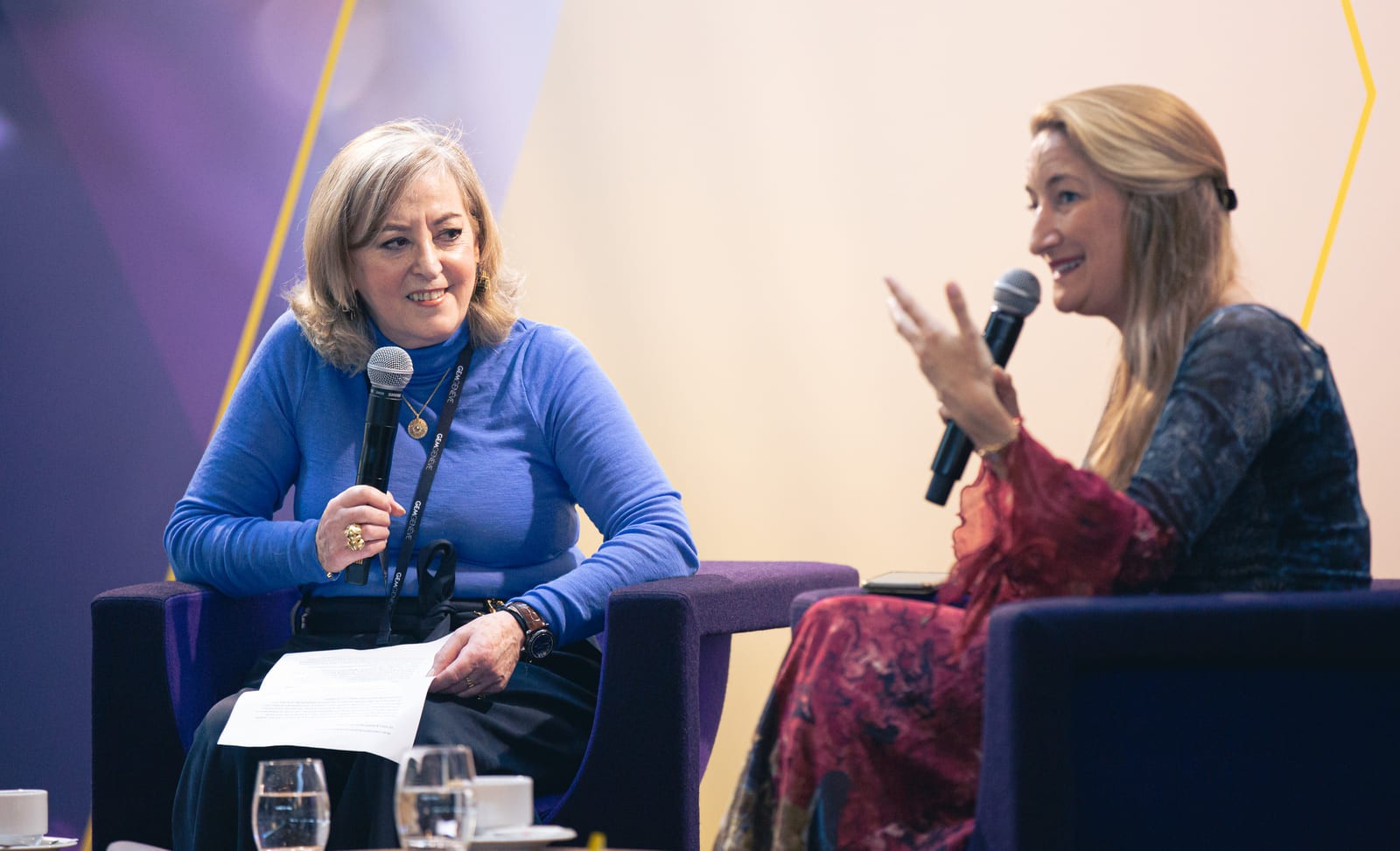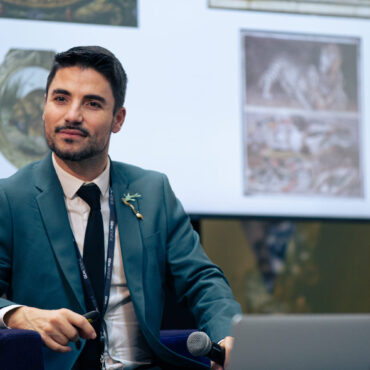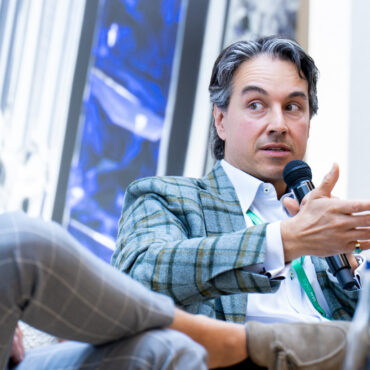Speakers: Jewellery historian Vivienne Becker and Helen Molesworth, Dr Geneviève
Davies, Senior Curator of Jewellery, Victoria & Albert Museum, London
Together, Vivienne Becker and Helen Molesworth discuss the role of the Victoria & Albert Museum Collection, as both education and inspiration, in our jewellery world today. They will talk about the relevance of jewellery history to contemporary design, the importance of looking back to look forward, of understanding what has gone before to be genuinely innovative. Finally, they will discuss today’s fast-growing appreciation of antique and 20th-century jewellery.
Helen Molesworth has an exciting profile. She started as a classicist student at Oxford, and while studying ancient art and archaeology, she realised she loved jewellery. This was the beginning of a fascinating journey that took Helen to Sotheby’s and Christie’s in London, knowing and dealing with antique pieces. Ten years of experience led her to set up an international academy to form students in Switzerland and Asia and to the sale, in 2006, of Princess Margaret’s jewels in London. Through this sale, Helen met the Victoria & Albert Museum curator, with whom she stayed in touch all these years. Today, Helen has the job of a lifetime: senior curator of jewellery at the V&A Museum in London.
The William and Judith Bollinger Gallery at the V&A Museum is one of the world’s finest and most spectacular jewellery collections. Over 3,000 jewels tell the story of European jewellery from ancient times to today: an authentic treasure trove for jewellery lovers. In addition, this gallery is a significant example of discussing museum collections and their impact on the public and collectors.
Historically, museum collections were just sort of places to put objects and things, a way to go and look at historically and culturally significant items. Today, a museum collection can be seen, following Roy Strong, as “an extremely capacious handbag”. This comparison offers a fascinating way of looking at museum collections: a place one can delve into to discover something meaningful.
Walking through a collection in a museum offers endless surprises, with superb objects popping up from behind the corner. So today, a museum collection is no longer a repository for things. It is not about a place to be formally educated. Instead, it is a place of joy.
There are, of course, both educational and intellectual elements. Also, there is the cultural element: we learn about history. We can understand where we are today by looking at museum collections because we investigate the past of jewellery design and creativity.
Andrew Prince, who made all the jewellery for Downton Abbey, said that people no longer go to museums to be educated. Instead, they go to be entertained. This is a fascinating mix: the educational element becomes more holistic. This is how a museum should be today.
Knowing the past to understand the present and future of jewellery is equally important. If you know what has happened before, you can make sense of where you are today and have a chance to understand what is coming next.
And that is also important for museum collections because we look at cultural and historical collections. So, if one understands where we come from through an ensemble of objects, we know ourselves and understand the world better.
Amazing collections have been donated to the V&A Museum through time, including pieces from Castellani, and the fantastic Campana collection, created by the Marquess of Campana in Italy. But why do people collect?
One remarkable example of a gems collection is the impressive “gem wheel” that visitors encounter when entering the jewellery gallery at the V&A. This collection was amassed by Reverend Chancy Hair Townsend, a cleric and a poet who created this fantastic collection in the 1800s, including pink diamonds, huge aquamarine, spinels and engraved emeralds.
There are 154 stones that Townsend donated to the museum. And some of them came out of the Henry Philip Hope collection (Philip Hope is the gentleman who gave his name to the Hope Diamond at the Smithsonian Museum in Washington, DC). A significant provenance that elevates this collection even more.
Collections are a way of continuing jewellery. Jewellery collections can be built very quickly, not financially, but physically. And something remarkable is when you have a collector that adds to the collection’s value, which can then have an added history that adds to their interest.
The 1800s was a time when there was massive interest in the natural world. People began understanding how our planet was formed and the gemstone’s role in it.
Therefore, history and mineralogy are an excellent combination. So, for example, the Victoria & Albert and the Natural Science Museums (one in front of the other) were building their collections hand in hand as part of the 19th-century collecting movement. Therefore, in this period, naturalism is a combination of interest in the gemstones as a scientific, chemical, and physical interest and in jewellery as a design. Therefore, naturalism fits in very much with the revival of antiquity as a style. So, they developed simultaneously.
Consequently, a massive wave of naturalism in the 19th century moved away from 18thcentury floral ornaments towards absolute realism.
The 19th century was also a period when families with “new money” started collecting, which is interesting from the perspective of collecting antique jewellery and the view of the collection.
When we think, for example, of the collection of Lady Cory, we know it is about new money.
But other collections at the V&A are significant historic aristocratic collections. So we then have a combination of the 19th-century tradition of noble collection and the new cash from industrialization.
Another excellent example of a jewellery collection at the V&A is thanks to Lord Londonderry and the trustees of the Londonderry Estate. Frances Anne Vane Tempest was a very wealthy woman in her own right but married the third Marquess of Londonderry. She was so rich, and he respected her so much that he changed his name to take hers. She not only brought in her jewellery, but she also bought and inherited it, too. With the Marchioness, we see all aspects of collecting gifts, purchases, and inheritance. She also received unique pieces from Tsar Alexander I, who fell in love with her through a portrait
and sent her jewels – among which, a superb Siberian amethyst that we can admire in the Marchioness of Londonderry 1831 portrait. This portrait was painted to commemorate the coronation of King William IV. It welcomes the visitors at the entrance of the Jewellery Gallery at the V&A. This painting is an example of how aristocrats enjoyed their jewellery collections – by wearing more (or all) pieces together, by sewing them to their robes and by re-wearing again and again.
This attitude is quite different from those collectors who build sorts of “cabinets de curiosités” containing pieces that are not meant to be worn.
Several jewellery collections came to the V&A museum through donations or loans – Lady Cory’s, for example, or the Londonderry jewels and the same William and Judith Bollinger donations. These are attractive opportunities to show treasures to the world instead of keeping them locked away in a safe.
Today there is a surge in interest in collecting antique and vintage jewels – books and exhibitions testify of this revival, and people are starting to recognise how fabulous antique treasures are.
For example, there is a point to mention about engraved gemstones. These were all the rage in the 18th and 19th centuries. At that time, the Grand Tour was fashionable among the young aristocrats, who would tour Europe and Italy to learn – it was part of their formation as cultured gentlemen.
So, when these mosaics were discovered in the 1800s, especially 1860s and up to the 1890s,
it created a massive fascination, a bit like the Egyptian revival of the 1920s following the discovery of Tutankhamun’s tomb. The classical revival of the 19th century made, at the time, a lot of sense. But what about today?
There seem to be three main theories about the revival of antique jewels, the first one linked to escapism and nostalgia as the main factors directing collectors and connoisseurs to antique treasures.
We are going through challenging times, surrounded by pandemics and wars. This generates uncertainty about our future and our planet. It is equally hard to look ahead and be optimistic. It comes then quite naturally to look backwards to what was in our eyes “golden ages”, in which you felt safe and secure, living a happy and perfect life. Antique jewels then testify of these golden ages, reassure us, and take us back to a peaceful, solid and safe past – that is known, in opposition to the future, that is unknown and can be unforeseeable.
Therefore, today revivalism could mean bringing back a lost golden age.
A second reason for the coming back of antique jewels could lie in the globalisation of social media information. The Internet has made getting information more accessible, so antique jewels can instantly be recognised and appreciated, with information about periods and styles at your fingertips.
The third theory is the search for a unique object on the part of collectors and connoisseurs.
Nothing is more special than a piece of ancient jewellery – it came from somewhere and has not been made twice. Buying antique jewels shows people’s ability to understand style, craftsmanship and uniqueness, which matters more and more, especially with specific groups of clients, such as the Chinese ones.
The Chinese public is very akin to appreciating the value of antique craftsmanship. But unfortunately, this art is slowly disappearing, and Asian clients are showing a deep interest and education in valuing the antique savoir-faire – this is why they are so much into purchasing antiques in general.
Antique jewels have powerful storytelling. By looking at them, we discover so many stories, ancient myths, and legends recreated in the designs and carving of gems, which are truly enchanting, and people feel this fascination.
An interesting example is the Devonshire Parure which includes a tiara, a massive stomacher, and a necklace, created in the 19th century for the Duchess of Devonshire by using ancient gems – some of these dating back to the 16th century. The concept of using ancient gemstones for jewels is a statement of power and status, something that is no longer valid today but still reflects an intellectual direction to understand life in a specific epoch. The same goes for Napoleon Bonaparte, whose crown was created and modelled following the Ancient Roman designs. This crown screams, “I am your new Emperor”, and legitimates his
role as ruler by recalling a glorious past of power and domination to our memory.
Knowing and studying antique jewels is a never-ending affair with beauty and pleasure: the more you look at them, the more you want to know about them, and the more you are amazed by all the cultural layers and references (historical, cultural) they offer, and the relationship between the ancient and the contemporary worlds.
Understanding antique jewels is like understanding a poetic language, and collecting them is like composing your personal poem to Beauty and Grace.





